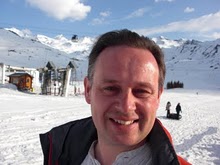Lecturing is a tough business, and half the job is largely ignored.
This post is stimulated, in part by an article in Physics World on the training of physicists for lecturing, and how they really don’t like it. It turns out it is rather timely since Times Higher Education has also published on the subject, in this case highlighting how universities place little emphasis on the importance of good teaching in promotion.
I taught physics at Cambridge University: small group tutorials and lab classes – I was a little short of a lecturer. I also taught physics as a lecturer at UMIST. I should point out that the following comments are general, I think they would apply equally to any of the older universities.
Mrs SomeBeans is a lecturer in further and higher education, the difference between the two of us is that she had to do a PGCE qualification whereas I was let loose on students with close to zero training.
I did spend an interesting day in lecturer training at Cambridge, a small group of new lecturers, and similar, spent a fairly pleasant day chatting and being video’d presenting short chunks of lectures. I learnt several things on that day:
1. Philosophy lecturers use hardly any overheads.
2. Most of us found lecturing pretty nerve-wracking, one of our number wrote out her lectures in full in longhand to cope.
3. Drinking as a cure for pre-lecture nerves doesn’t work well
4. I spoke like a yokel and was slightly tubbier than I thought!
Round two at my next employers was a bit more involved. I can’t remember much from the two day event, but many of the points from the Physics World post came out. Scientists are typically taught how to lecture together as group, and their point of view is somewhat in collision with those of educationalists who seem to be able to throw out three mutually incompatible theories before breakfast and not be interested in testing any of them.
I have an insight which may help scientists in these situations: outside science the idea of a “theory” has quite a different meaning from that inside science. This paradox is also found in management training. Non-scientists use a “theory” as a device to structure thought and discussion, not as a testable hypothesis. Therefore multiple contradictory, or apparently incompatible theories, can be presented together without the speaker’s head exploding. They’re not generally tested in any sense a scientist would understand, very few people attempt to quantify teaching Method A against teaching Method B. The thing is not to get hung up on the details of the theory, the important bit is being brought together to talk about teaching.
I enjoyed parts of teaching: physics tutorials for second years at Cambridge was something of a steeplechase with the not particularly experienced me, hotly pursued by rather cleverer undergraduate students over problems for which the lecturers did not deign to supply model answers. Exceedingly educational for all concerned. Practical classes were also fun: the first time a student presents you with a bird’s nest of wires on a circuit board it takes about 15 minutes to work out what the problem is, the second time you immediately spot the power isn’t connected to the chip – and students think Dr Hopkinson is a genius.
Lecturing I found pretty grim, except on the odd good day when I got an interesting demonstration working. I was faced with 80 or so students, many of an unresponsive kind. I ploughed through lecture notes on PowerPoint which I found interesting when I was writing but in the lecture theatre I found painfully long winded. Lecturing is the most nerve-wracking sort of public speaking I’ve done, and I suspect many lecturers find it the same. I remember one of my undergraduate lecturers was clearly a bag of nerves even in front of the small and friendly course to which I belonged (and I’m not good at picking up such things).
In a sense lecturing is a throwback, there are so many other ways to learn – and I fear we only teach via lecturing because that’s what we’ve always done. Nowadays it’s easy, although time consuming, to produce a beautiful set of printed lecture notes and distribute the overheads you use: but is it really a good use of time to go through those overheads (which I am sure is what nearly everyone does)? Nowadays I learn by reading, processing and writing (a blog post) or a program.
There’s another thing in Physics World article:
At universities the task is often performed by academics who are much more interested in research and therefore regard teaching as a chore.
This is absolutely true, in my experience. I’ve worked in three universities post-undergraduate, I’ve been interviewed for lectureships in a further six or so. And in everyone the priority has been research not teaching, which is odd because if you look at funding from the Department for Innovation, Universities and Skills something like £12billion is directed at teaching and something like £5bn at research.
So why did I write this post: perhaps it’s a reflection of opportunities missed and a time spent chasing the wrong goals. If I did it all again there seem to be so many more ways to talk to other lecturers about teaching. On twitter, in blogs.







